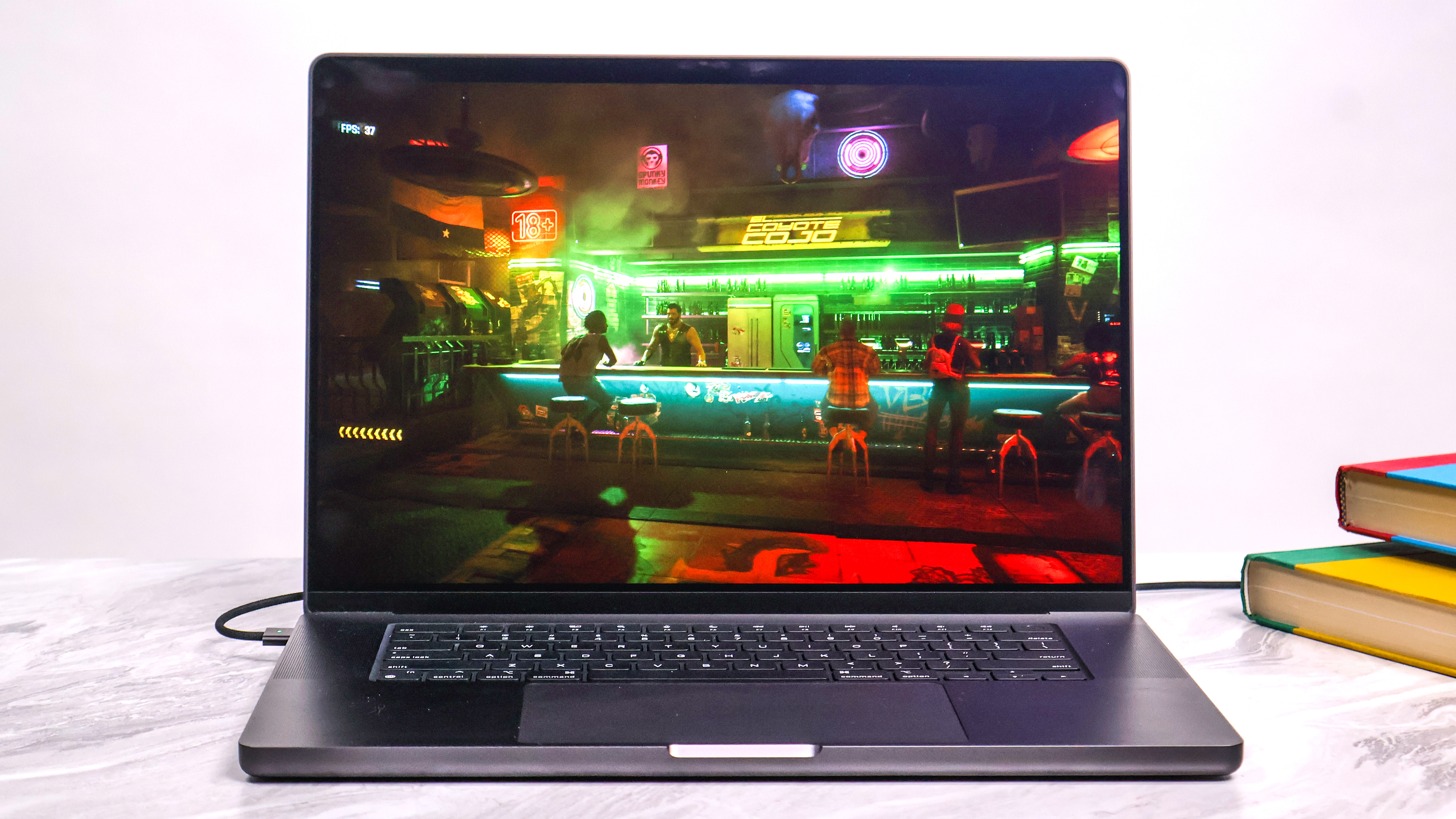
Nearly five years after launch, Cyberpunk 2077 now runs natively on Macs — and it runs well, if you rely on Apple’s MetalFX upscaling tech.
I know because here at Tom’s Guide our crack team of testing experts has been hard at work in our lab this week benchmarking how well the game runs on a slew of modern Macs.
Now we have numbers for how well Cyberpunk 2077 runs on everything from a 2021 M1 Max MacBook Pro to a cutting-edge M4 Max Mac Studio, and the results should get you excited if you’ve been dreaming of playing CD Projekt Red’s cyberpunk RPG.
Because our testing reveals that while even the latest Macs can’t match the gaming prowess of the best gaming PCs, if you fine-tune the settings and enable MetalFX resolution scaling you can get some pretty good framerates playing Cyberpunk 2077 on your Mac.
Cyberpunk 2077: Ultimate Mac system requirements
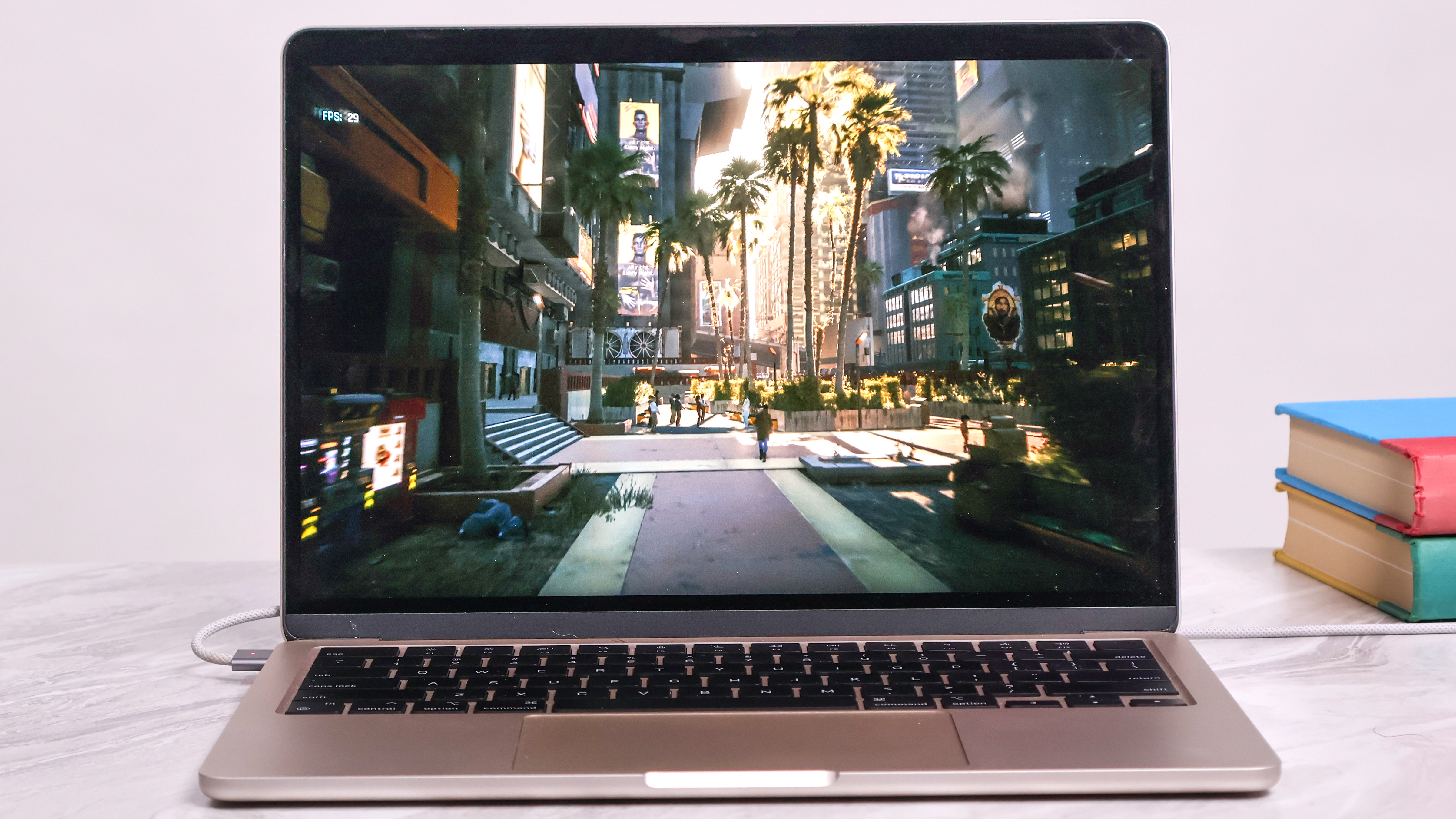
Before we dig into the data, I wanted to quickly remind you that Cyberpunk 2077: Ultimate runs on most Macs with Apple silicon—but there are some key caveats you should know about.
Notably, to run it your Mac must be packing an M1 chip or newer and have at least 16GB of unified memory. So we couldn’t test how well it runs on an entry-level MacBook Air M1 or MacBook Air M2, for example, because they only have 8GB of memory.
On top of that, only Macs with M3 or newer chips support the game’s ray tracing features. So as you’re looking through our test results, remember that only the M3 and M4 Macs can even run the game with ray tracing enabled.
How Cyberpunk 2077: Ultimate stacks up on Macs vs. Windows PCs
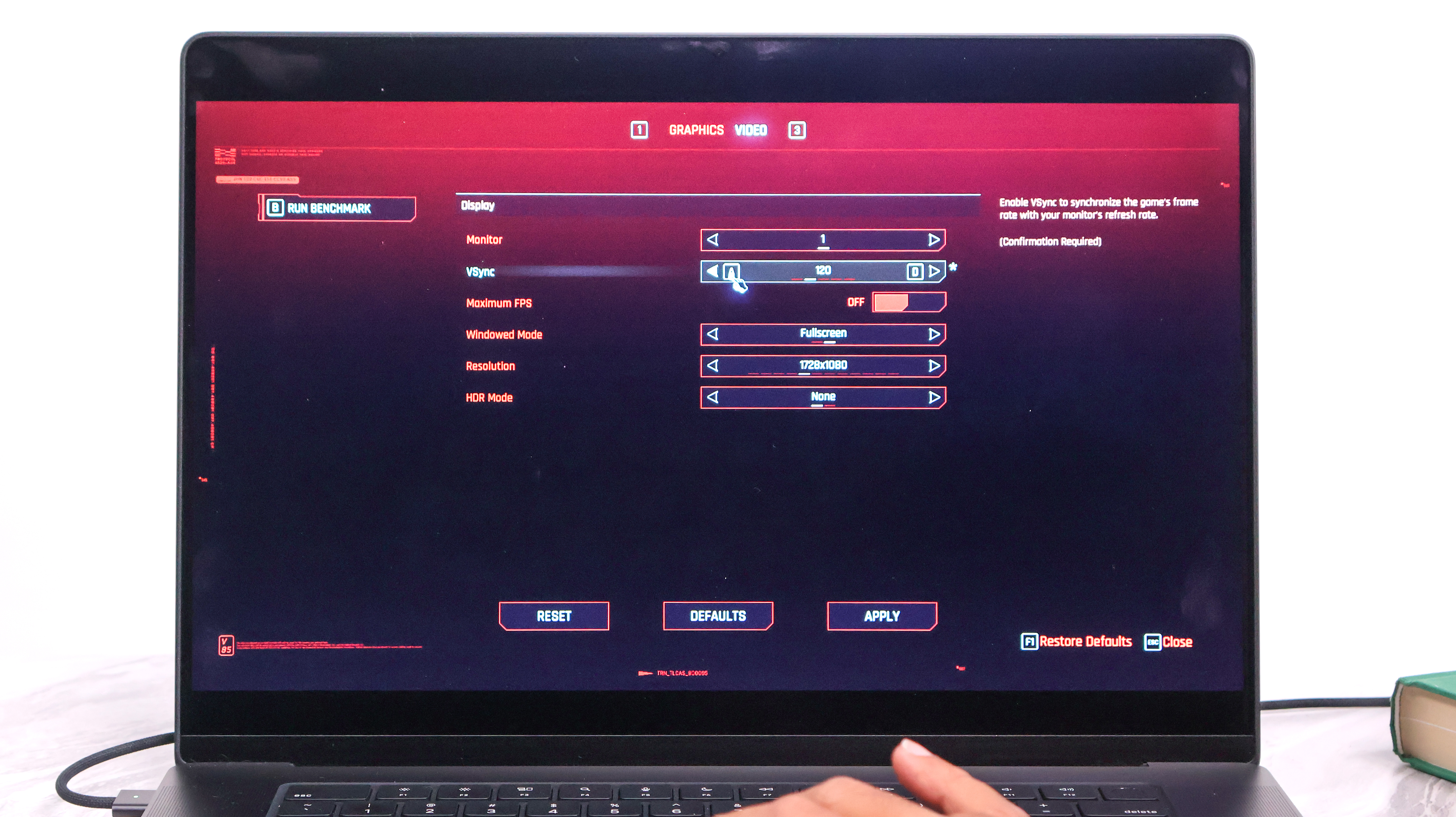
Cyberpunk 2077: Ultimate launched on the Mac App Store Thursday (July 17), and our testing team immediately downloaded a few copies and started benchmarking it on every Mac we could lay our hands on.
So while we haven’t yet had a chance to comprehensively benchmark it on every possible Mac configuration, we do have a nice spread of test results that gives you a good sense of how well the game runs on Apple silicon old and new.
The quick answer is: pretty well! However, you have to give yourself over to Apple’s MetalFX resolution scaling and the nebulous “For Your Mac” graphical preset in order to get a decent framerate playing Cyberpunk 2077 on most Macs.
When we did our best to fine-tune the graphical settings to match what we use when running Cyberpunk 2077 benchmarks on Windows PCs, the framerate tanked. If you’d like to get a sense of how different these two configurations look, click to zoom in on the screenshots below.
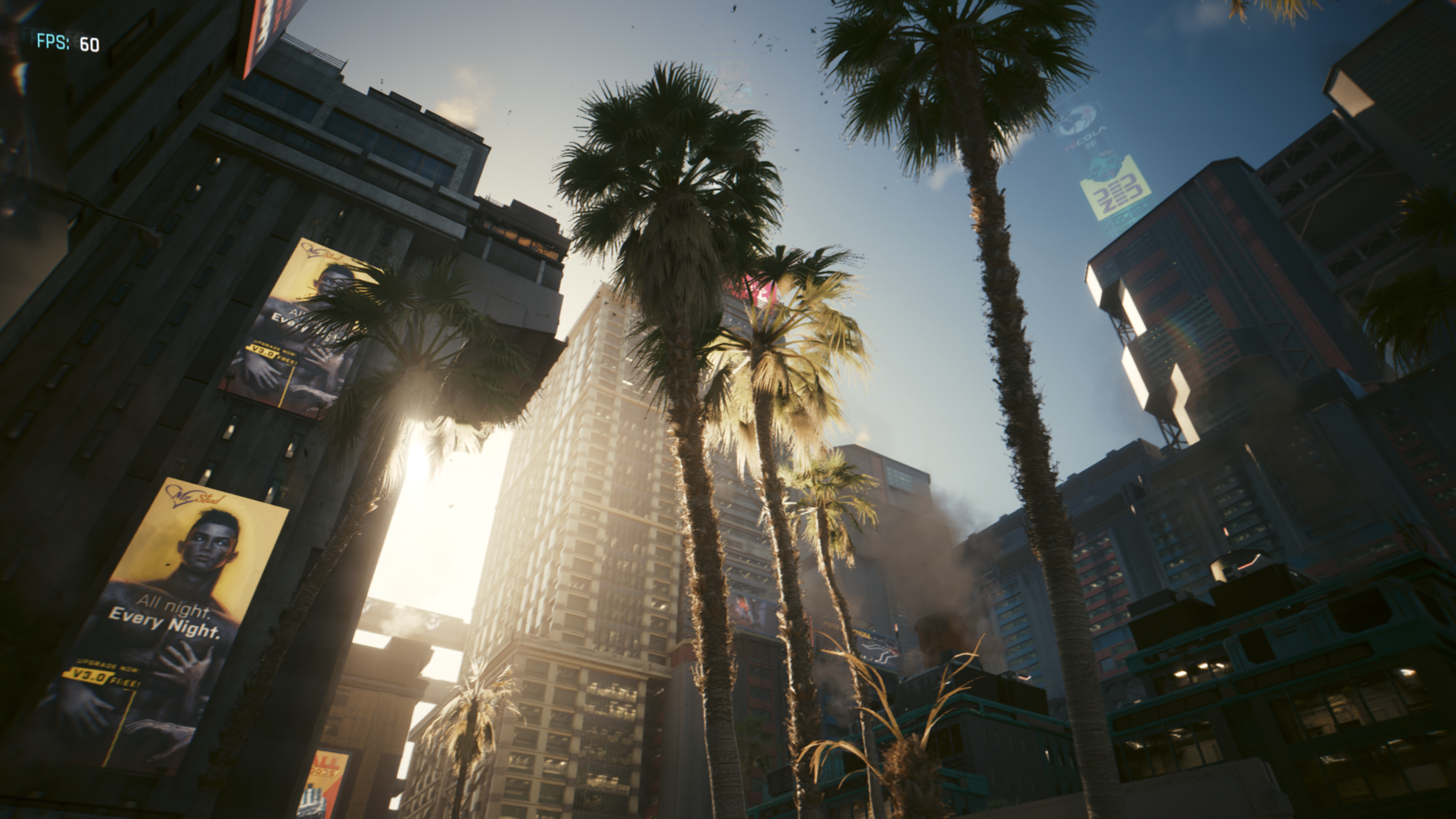
To show you what I mean I’m going to list the specific settings we used for these benchmarks below. But if you’re not interested, you can skip straight to the results!
Read our test settings ▼
We ran these benchmarks on every Mac we could find using two graphical settings configurations, the vague “For Your Mac” setting that Apple recommends and a slight modification of the “Ray Tracing: Ultra” preset that we use when benchmarking this game on gaming laptops and desktops. On the oldest Macs that did not support ray tracing, we used the “Ultra” preset instead.
For full transparency I’m going to share our exact Mac testing settings here so you can see for yourself how we came by these numbers, but if you’re more interested in the results feel free to skip down to the next section!
Swipe to scroll horizontally
| Row 0 – Cell 0 |
Ray Tracing: Ultra |
“For this Mac” |
|
Resolution Scaling |
Off |
MetalFX |
|
MetalFX Sharpness |
N/A |
0.5 |
|
Target FPS |
N/A |
60 |
|
Minimum resolution |
N/A |
50 |
|
Maximum resolution |
N/A |
80 |
|
Frame generation |
Off |
Off |
|
Texture quality |
High |
High |
|
Ray tracing (reflections/shadows on, lighting ultra, path tracing off) |
On |
Off |
|
Crowd density |
High |
High |
|
Field of view |
80 |
80 |
|
Film grain |
On |
On |
|
Chromatic aberration |
On |
On |
|
Depth of field |
On |
On |
|
Lens flare |
On |
On |
|
Motion blur |
High |
High |
|
Contact shadows |
On |
On |
|
Improved facial lighting geometry |
On |
On |
|
Anisotropy |
16 |
16 |
|
Local shadow mesh quality |
High |
High |
|
Local shadow quality |
High |
High |
|
Cascaded shadows range |
High |
High |
|
Cascaded shadows resolution |
High |
High |
|
Distant shadows resolution |
High |
High |
|
Volumetric fog resolution |
Ultra |
Ultra |
|
Volumetric cloud quality |
Ultra |
Ultra |
|
Max dynamic decals |
Ultra |
Ultra |
|
Screen space reflections quality |
Ultra |
Ultra |
|
Subsurface scattering quality |
High |
High |
|
Ambient occlusion |
High |
High |
|
Color precision |
Medium |
Medium |
|
Mirror quality |
High |
High |
|
Level of detail |
High |
High |
|
Vsync |
60 |
60 |
|
Windowed mode |
Fullscreen |
Fullscreen |
|
Resolution |
2560 x 1440 |
2560 x 1440 |
Before I start comparing Windows and Mac results side by side, let me run down how our many Macs performed in these tests.
As you can see from our testing, you basically cannot get a steady 30 frames per second or above at max settings on any Mac we have on hand. However, if you’re willing to use the “For this Mac” preset and lower the resolution to 1200p you can get decent performance on even a 13-inch MacBook Air.
Swipe to scroll horizontally
| Row 0 – Cell 0 |
(Ray Tracing) Ultra |
“For this Mac” |
|
16″ MacBook Pro M1 Max (1920×1200) |
31.2 |
78.9 |
|
16″ MacBook Pro M1 Max (3456×2160) |
9.5 |
43.4 |
|
14″ MacBook Pro M2 Pro (1920×1200) |
36.1 |
41.4 |
|
14″ MacBook Pro M2 Pro (3042×1890) |
15.8 |
30.5 |
|
13″ MacBook Air M3 (1920×1200) |
4.3 |
34.7 |
|
13″ MacBook Air M3 (2560×1600) |
2.6 |
27.3 |
|
15″ MacBook Air M4 (1920×1200) |
6.1 |
34.4 |
|
15″ MacBook Air M4 (2880×1800) |
2.8 |
22.8 |
|
16″ MacBook Pro M4 Pro (1920×1200) |
14.1 |
65.8 |
|
16″ MacBook Pro M4 Pro (3456×2160) |
4.8 |
38.8 |
|
Mac Studio M4 Max (1920×1080) |
29.5 |
108.8 |
|
Mac Studio M4 Max (3840×2160) |
8.5 |
60.2 |
You might also notice that the older M1 Max MacBook Pro appears to run the game better than the new MacBook Pro M4 Pro, and the reason is simple: M1 and M2 Macs don’t support ray tracing, and the game is a lot less demanding without it.
So if you have a newer M4 Mac, don’t sweat it: disabling ray tracing should give you a nice framerate boost. However, I’d personally be bummed to lose that feature because I find it adds a nice patina of realism to the game.
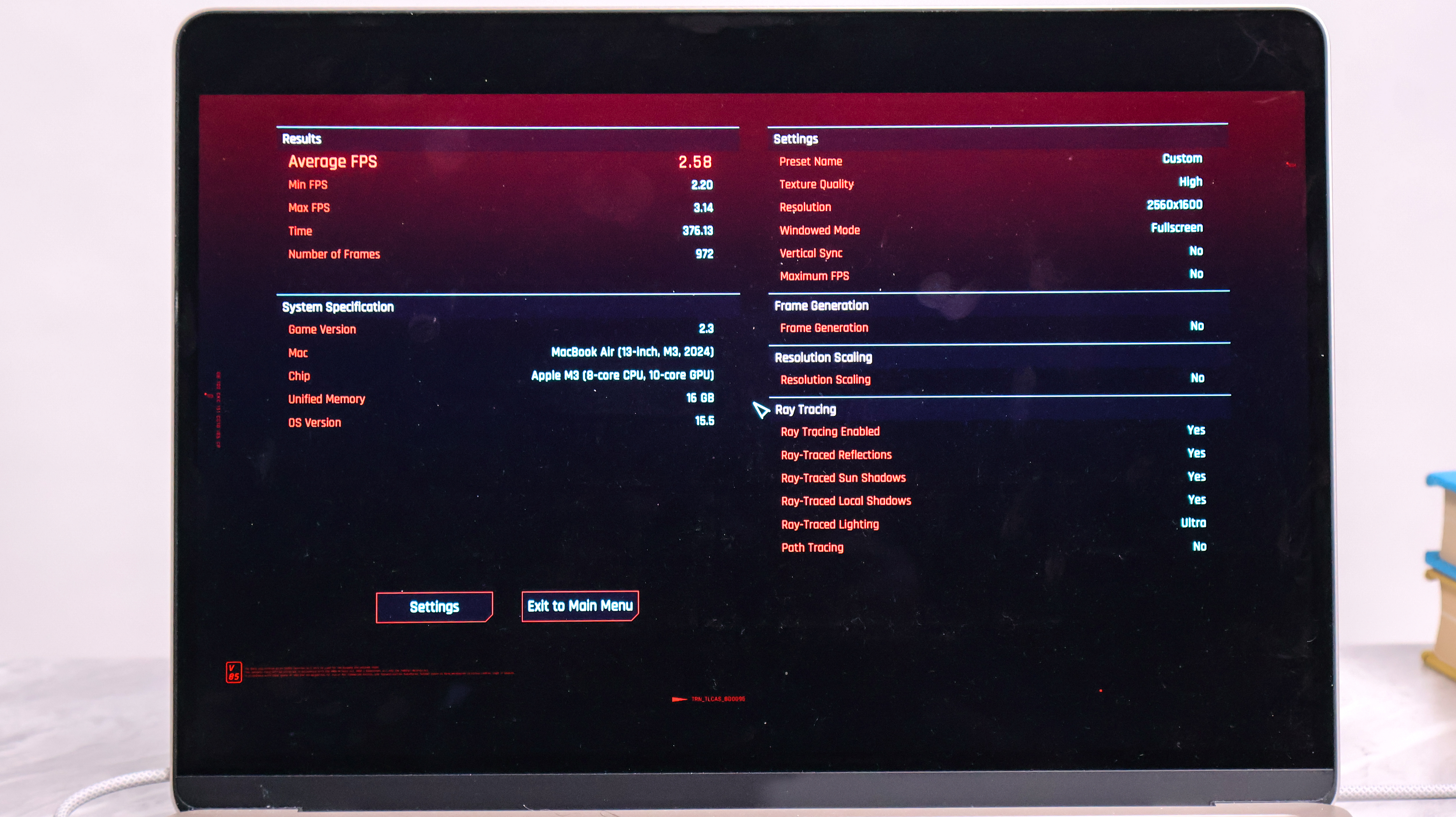
Now let’s compare those results to what we saw when we ran the game on some of the latest and best gaming laptops we’ve recently tested. Before you look at the numbers, keep in mind that this is a raw performance test so we do not enable any graphical upscaling tech like the MetalFX resolution scaling available on Mac. So that means none of these test results were generated using any Nvidia DLSS, AMD FSR or Intel XeSS upscaling.
Swipe to scroll horizontally
| Row 0 – Cell 0 |
Ray Tracing Ultra |
|
Asus TUF Gaming A14 RTX 4060 (1920×1080) |
29.6 |
|
Asus TUF Gaming A14 RTX 4060 (2560×1600) |
15.3 |
|
Asus ROG Zephyrus G14 RTX 5080 (1920×1080) |
49.6 |
|
Asus ROG Zephyrus G14 RTX 5080 (2880×1800) |
24.3 |
|
Razer Blade 14 RTX 5070 (1920×1080) |
39.6 |
|
Razer Blade 14 RTX 5070 (2800×1800) |
9.1 |
|
HP Omen Max 16 RTX 5090 (1920×1080) |
71.5 |
|
HP Omen Max 16 RTX 5090 (2560×1600) |
46.8 |
As you can see, the numbers are generally better than anything you can get running the game on Mac with no upscaling enabled. One notable exception is the 2025 Razer Blade 14, which seems to struggle with this benchmark at its native 1800p resolution.
But of course, since we don’t benchmark our review units with any kind of upscaling enabled you don’t get the full picture of what’s possible on a modern Windows gaming laptop with framerate enhancements like Nvidia’s DLSS.
To show you what I mean, look how fast a modern gaming laptop (the Asus ProArt P16 with an Nvidia RTX 5070 GPU, AMD Ryzen AI 9 HX 370 CPU and 32GB RAM) can run Cyberpunk 2077 with graphical settings cranked to max (Ray Tracing Overdrive) at its native (2560×1600) resolution with increasing levels of DLSS 4’s Multi Frame Generation enabled.
Swipe to scroll horizontally
| Row 0 – Cell 0 |
Ray Tracing Overdrive |
|
Multi Frame Gen x2 |
73.4 |
|
Multi Frame Gen x3 |
83.7 |
|
Multi Frame Gen x4 |
110.6 |
That’s fairly typical of the performance increase I’ve seen on multiple gaming laptops and PCs after enabling DLSS and Multi Frame Gen while playing Cyberpunk 2077.
Admittedly, when Multi Frame Gen debuted with the first GeForce RTX 50-series graphics cards in January I didn’t love how the higher levels (3x-4x) seemed to cause disorienting graphical glitches in some games, but nowadays CD Projekt Red and Nvidia seem to have fine-tuned it and even at Multi Frame Gen 4x I rarely see any issues in Cyberpunk.
Bottom line
While we haven’t yet had a chance to test every config of Cyberpunk 2077 on every Mac, it’s pretty safe to say that even the most tricked-out Mac Studio M3 Ultra probably won’t run it as well as an equally expensive Windows gaming PC with the latest and greatest.
But let me tell you, I’ve been reviewing some very expensive gaming PCs recently (like this $7,399 Corsair Vengeance i8300) and despite sporting an Nvidia GeForce RTX 5090 GPU and cutting-edge components that thing struggles to surpass a solid 80+ FPS with all graphical settings cranked to max—even with DLSS 4 and Multi Frame Gen 4x enabled.
That’s in part because Cyberpunk 2077 is a very demanding game that employs some of the latest graphical tech you can get, so it’s remarkable that our testing shows you can now play it on a MacBook from four years ago and expect a decent 30-60 FPS, especially if you enable MetalFX upscaling and trust in Apple’s “For Your Mac” config.
There’s no shame in relying on it either, since you also need to rely on DLSS or FSR to get great framerates in the game at peak settings when playing on Windows. So while Windows gaming machines still seem like the best place to play Cyberpunk 2077 if you care about graphical fidelity and performance, it’s clear Apple and CD Projekt Red have done yeoman’s work to bring one of the best PC games to Mac.
